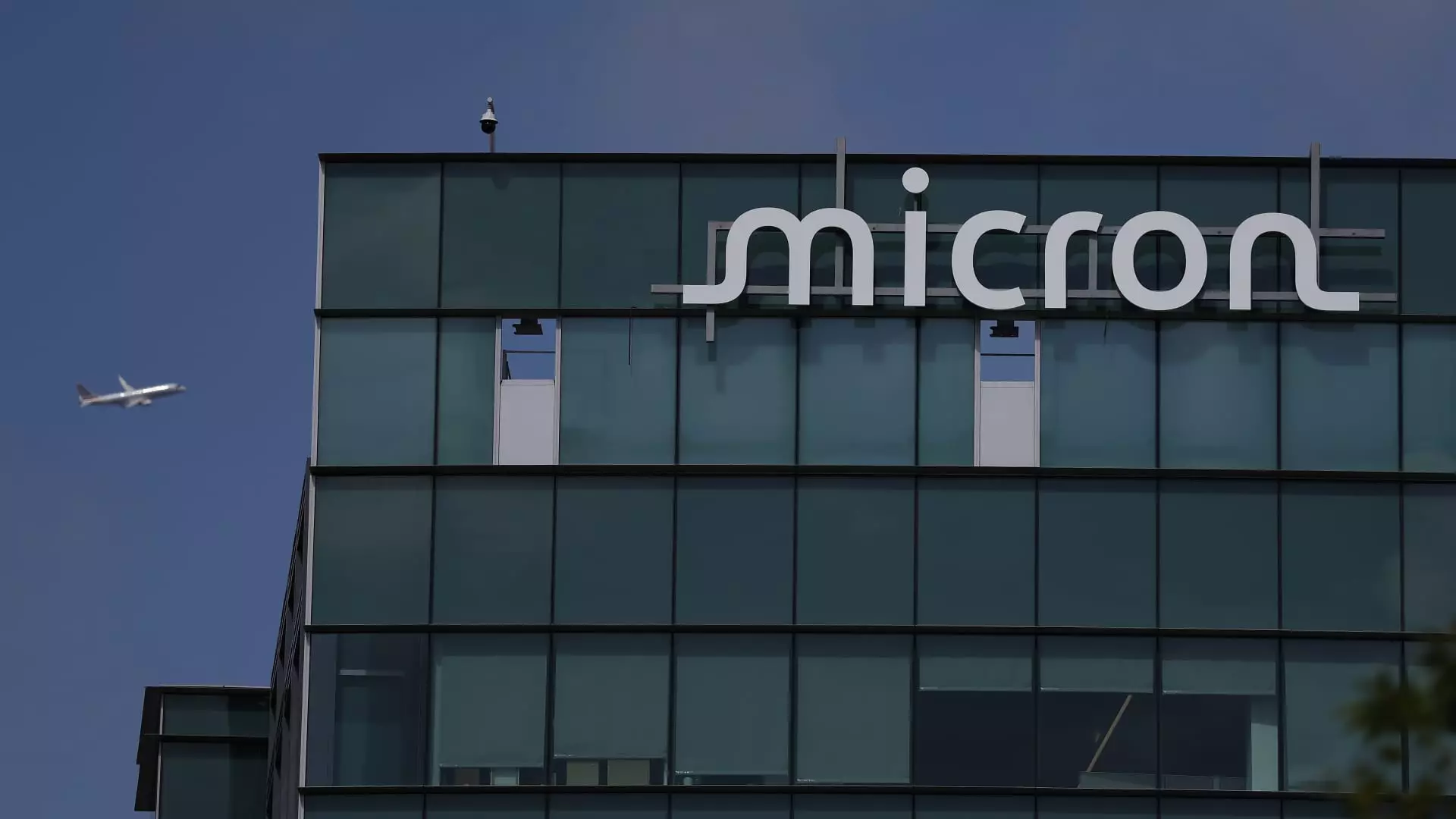In an era where technology companies have been grappling with supply chain woes and fluctuating demand, Micron Technology’s recent financial report shone brightly. An impressive rise of nearly 4% in its stock value underscores the company’s resilient positioning within the semiconductor market. Analysts forecasted an earnings figure of $1.60 per share, but Micron wowed investors with an adjusted $1.91, alongside a striking revenue of $9.30 billion. This significant deviation from expectations reveals not just luck, but a well-orchestrated strategy focused on innovation and market adaptability. Moreover, their bullish outlook for the upcoming fourth quarter signals a promising trajectory that could fortify investor confidence in an otherwise tumultuous sector.
H.B. Fuller’s Adhesive Ascent: A Sticky Situation Turned Golden
H.B. Fuller has turned the proverbial lemons of current economic challenges into lemonade, seeing its shares leap over 6% in post-market trading. The adhesive manufacturer proved the naysayers wrong with adjusted earnings of $1.18 per share, outstripping the anticipated $1.08. It’s a clear indication that some sectors can still thrive despite headwinds. The company even revised its full-year earnings forecast positively, demonstrating a robust capacity to generate growth. In today’s climate, where volatility reigns supreme, H.B. Fuller serves as a testament to businesses that embrace resilience and foresight.
Kratos Defense Stumbles: Market Reaction to Financing Struggles
Not all was rosy in the after-hours trading world. Kratos Defense & Security Solutions faced a disheartening dip of nearly 7%, particularly due to the company’s announcement of a $500 million public offering. Investors typically perceive such moves as red flags, fearing dilution of their stakes and questioning the underlying health of the business. The security sector, ever critical in today’s socio-political climate, must tread carefully. Kratos hangs in precarious balance: while their technology is vital, missteps in communication or financial strategy can result in swift shifts in investor sentiment.
MillerKnoll’s Double-Edged Sword: A Revenue Spike Clouded by Declining Earnings
MillerKnoll’s unexpected 9% surge in stock after reporting net sales of $961.8 million reveals an intriguing dichotomy. While the overall revenue suggests an upward trend—an increase surpassing 8% from the previous year—the decline in adjusted earnings per share by over 10% raises eyebrows. The figure of 60 cents per share, down from 67 cents, introduces a layer of concern for investors. It indicates potential inefficiencies or rising costs that aren’t easily brushed aside. While the revenue figure garners enthusiasm, the company’s earnings narrative is clouded, creating a complex picture not easily deciphered by the market.
Jefferies Financial: A Missed Opportunity in a Competitive Arena
Lastly, Jefferies Financial presented a sobering reality—a stock decline exceeding 2% after reporting second-quarter earnings of 40 cents per share, trailing behind the analyst forecast of 44 cents. Positive revenue figures, at $1.63 billion outperforming expectations, are of little consolation when earnings falter. This scenario speaks volumes about the fierce competition investment banks face amid economic fluctuations. For Jefferies, turning this ship around will require not only evaluating internal strategies but also anticipating market demands dynamically, lest they become another casualty in the augmented landscape of financial services.

